by Mark Gilson
Sometimes the things we view every day are relegated to a lesser role in our lives. They become commonplace, uninspiring, unimportant. That is why we must travel occasionally, even if just for a silent momentary reverie, from which we return and view our daily world anew. Asclepias in all its forms shouts to us from the roadsides and meadows each year with striking flowers, waving foliage and elongated seed pods (follicles). A durable, tenacious and adaptable family that does a lot of heavy lifting for our local ecologies, Asclepias deserves a closer look and greater appreciation!
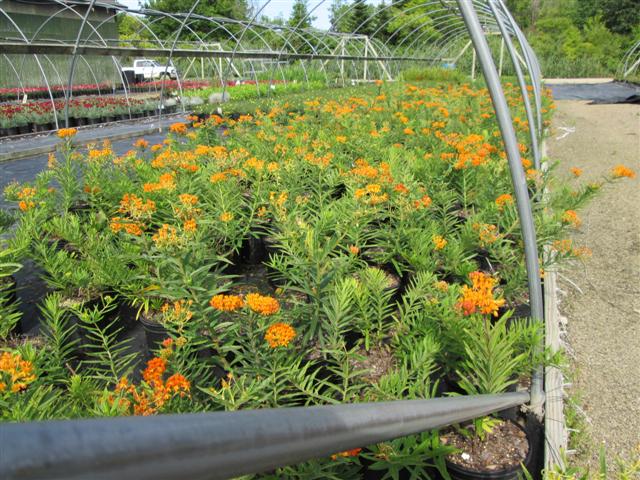
Asclepias tuberosa
Butterflyweed is a faithful herald of summer in Northeast Ohio, blooming bright orange along our roadways and meadows. A few years ago I noticed the flowers in late-June off Rt 2 in Painesville along the dry road-banks near the Grand River. Had they always been there? Two months later I donned my amateur-plant-explorer hat and set off in search of seeds. Parking on the freeway and climbing the fence would have been the most direct approach, but difficult to explain to Ohio Highway Patrol. Instead, I headed north of the city through a warren of curving streets, small homes and apartments, aiming for the utility wires that followed the highway. Undeterred, I crawled under a locked fence and hiked a quarter mile. A few pods waved among the weeds here and there, but not the multitude I had anticipated. Had the meadow been mowed? Were these truly A. tuberosa or were other species mixed in? Did E.H. Wilson run into these problems as he sought out cherries in Japan?
Above all, gardeners need to be patient.
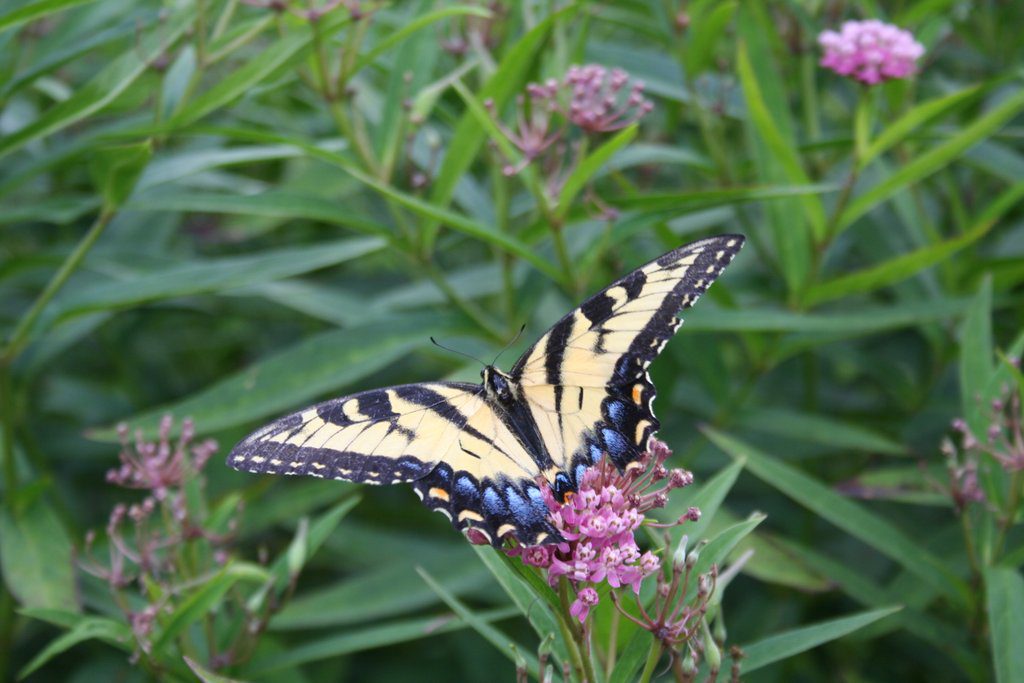
I waited a year, revisited the spot in June and attached orange tagging ribbon to dozens of butterflyweed. In the fall I returned and collected absurd amounts of seed pods from verifiable A. tuberosa.
My goal was to provide seed of ‘local genotype’. As a nurseryman this had never been a priority for me. Then I met the good folks from Cleveland Museum of Natural History (CMNH) and life, horticulture, spirituality became science-based and complicated. I was starting over. Returning home with my bounty, I was visited by misgivings. How can I be certain these plants represent ‘local genotypes’ of native plants? After all, my secret spot was less than a mile from Storrs & Harrison Nursery, one of the world’s largest, which operated for almost a hundred years. Other nurseries and other perennial-growers had flourished all around. What if my ‘genotypes’ had originated in Mexico, Malta or Madagascar? Should I test for genetic markers and, if so, where would I find a reliable baseline reference? Ultimately, I decided to go ahead with my ‘local native plants’ and let Jim Bissell (Botanist/Maven for CMNH) worry about the consequences. Let the buyer beware.
Drought-tolerant and long-lived, aslepias tuberosa is a great candidate for rain-gardens and low maintenance areas with dry well-drained soil. Sometimes called Orange Milkweed or Butterfly Milkweed, this species has less of the milky sap than its cousins. At 12-24” in height the orange flower clusters (umbels), lance-shaped dark green leaves and sturdy stems provide support for taller companions. Favored by Monarch Butterfly caterpillars, hummingbirds and native pollinators, the plant responds to trimming and looks handsome in a well-tended garden. I’ve seen container-plants over at Klyn Nurseries that are so colorful and crowned they resemble a greenhouse pot plant. Native Americans chewed the tap root to treat pulmonary illness, leading to another of its names, Pleurisy Root. Combine it with yarrow, which blooms at the same time (my favorite is the tall, old-fashioned Achillea x ‘Coronation Gold’) for a colorful cut-flower combination. Some gardeners flame the base of the stem before placing it in a cut-flower vase in order to reduce the flow of sap. Color variations from yellow to red occur naturally; cultivars are available from specialty growers and other evil-doers.
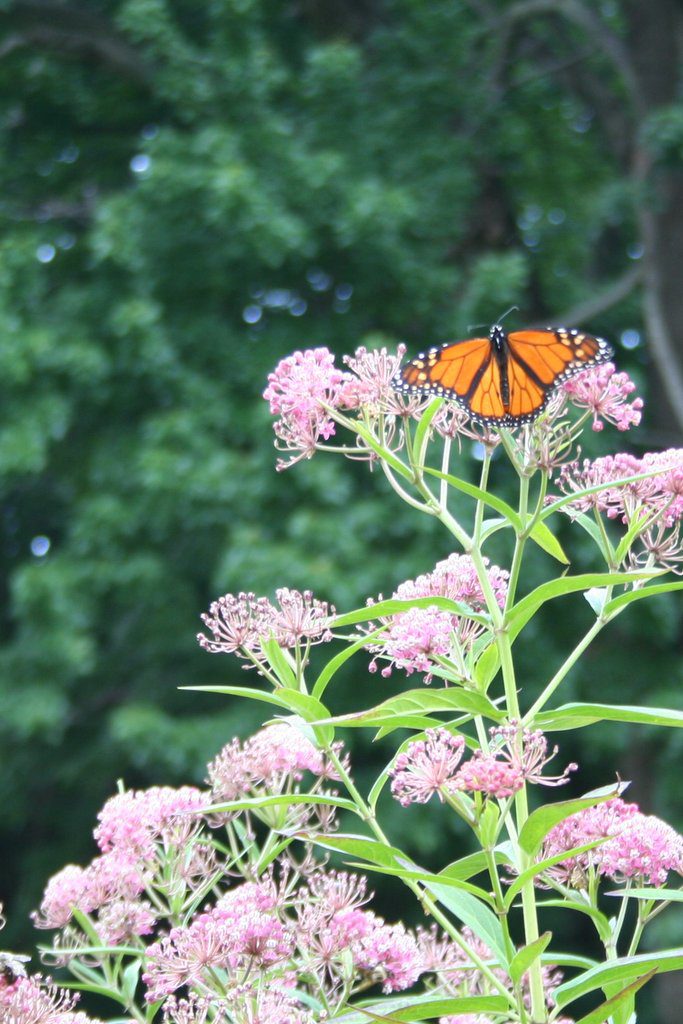
Be careful promising A. tuberosa to the Spring Plant Sales. It takes a while to wake up and sometimes does not like being forced in the greenhouse.
Aslepias incarnata
Swamp Milkweed, asclepias incarnata, is a comparative giant at 4-5’. With pale pink flowers appearing slightly later than Butterflyweed, this ecologically important native plant is best-known to many of us for the dried pods that explode with cottony bundles in Fall and Winter. Native to wet areas and river bottoms in Ohio, Swamp Milkweed also thrives in relatively dry conditions.
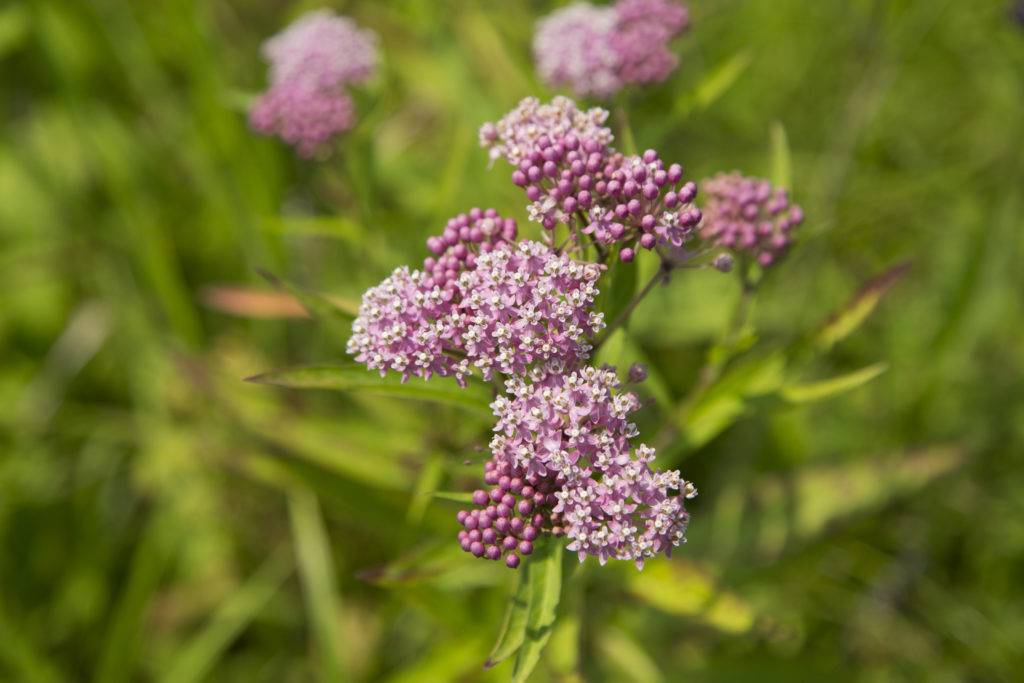
All these Asclepias form tap roots when grown in the soil, rendering them difficult to transplant in the garden. Yet they grow happily in a container with a well-drained mix. I dug up an A. incarnata once and moved it to a native garden in our nursery. It suffered horribly the first season but later regenerated from roots and took off. Allan Armitage writes about the nightmare of weeding Milkweeds from nursery rows and gardens. Not only do the roots grow down, they grow sideways! One volunteer that I left alone in our nursery spread eight feet in sandy soil before I realized what it had going!
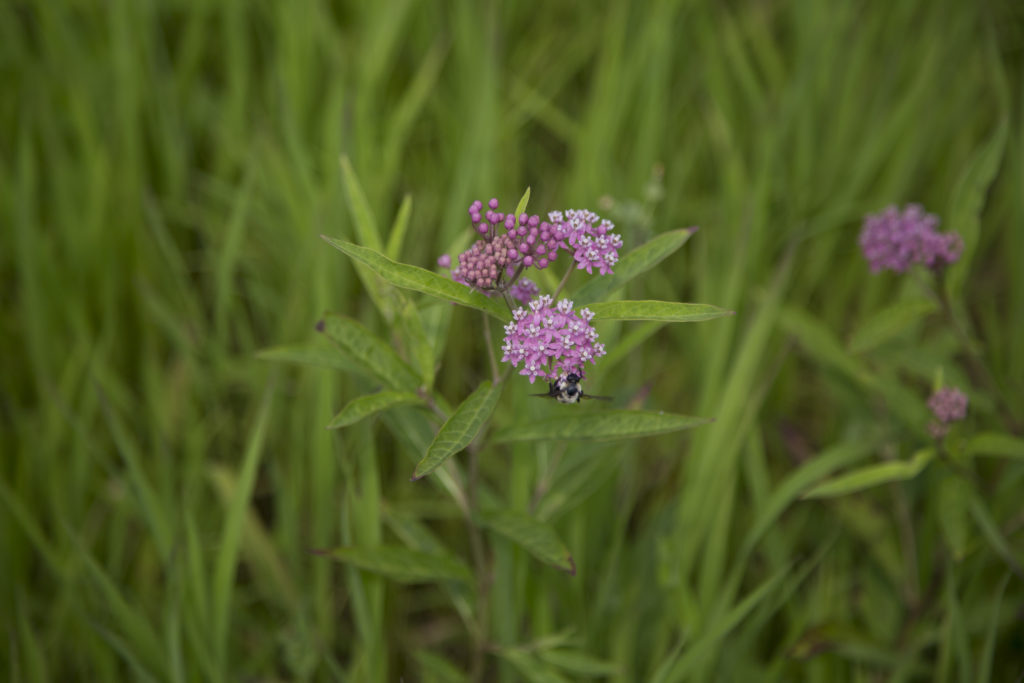
Asclepias syriaca
Garrett Ormiston, one of those educated folks over at the Cleveland Museum of Natural History, corrected my ID of a statuesque milkweed in our nursery. What I was calling Swamp Milkweed turned out to be Common Milkweed, aslepias syriaca. One of the best plants for providing food to butterflies and their larvae, says Garrett, its leaves are broader and it prefers drier areas than Swamp Milkweed. Also, the pale-pink flowers are round rather than flat. I think it provides a stunning although overlooked specimen for gardens and natural areas. If this was recently discovered or developed…it would be touted by Proven Winners!
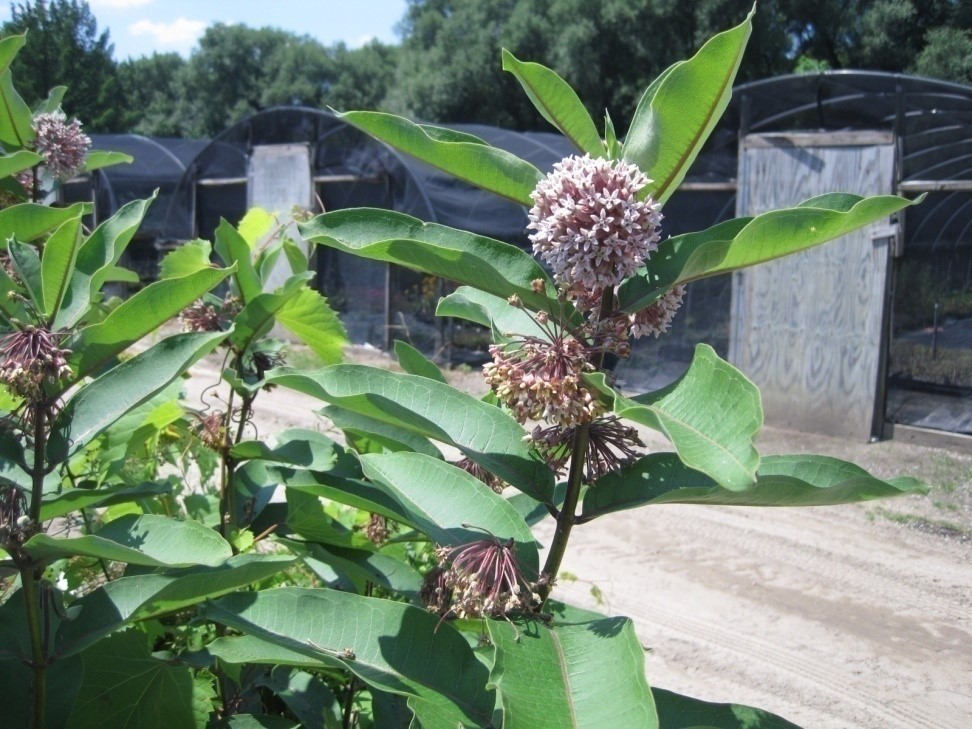
I collected Common Milkweed seeds and left them in our tool room for over a year (it’s our only roof that doesn’t leak). Busting open the pods makes a mess with all the white fuzzies (a technical term), but after some experimentation I found I could pinch out the silks and find a bounty of round dark seeds beneath, clustered there like tiny coins. I scattered the seeds in late-winter in an open tray filled with regular potting soil. I provided a light covering of sand, although that was probably not necessary. I placed the trays under intermittent mist because it is generally more reliable than my intermittent watering. Alternatively, just moisten the soil and place the tray in a sealed clear plastic bag. A couple weeks later the seedlings began poking up through the sand and soon filled in like the proverbial hairs on a dog’s back. Usually we dibble the seedlings into two-inch cells and offer them that way or later shift them to larger containers. As far as cultural conditions in the nursery, let me just say I am amazed at how much abuse these durable plants can take.
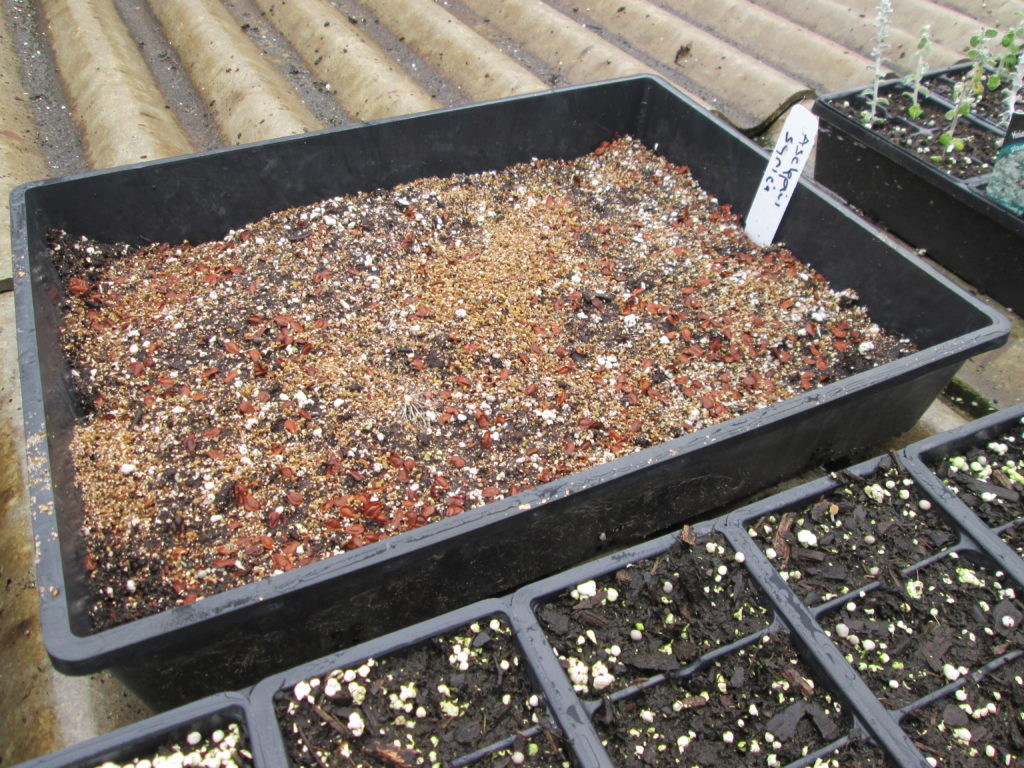
The tray in the photo was moved to a shade house from which it subsequently disappeared. An extensive investigation revealed that a student worker discarded it, remarking he thought it was a tray taken over by ‘weeds’. It’s all in the eye of the beholder.
Don’t believe the toxicity warnings by Euell Gibbons from 1962. Remember Euell Gibbons and ‘wild hickory nuts?’ Leaves of Common Milkweed have no bitterness when tasted raw and can be prepared like asparagus with no additional processing.
Something is Eating My Plant!
Milkweeds present a conundrum to the gardener and grower. When we say…’beneficial to local ecologies and pollinators’…we mean…’bugs will eat the heck out of them’. Here it is…should we apply pesticides to our native plants? Inspectors for Ohio Department of Agriculture frequent our nurseries and object to any commerce in bugs. They force us to use helicopters each year for gypsy moth control.
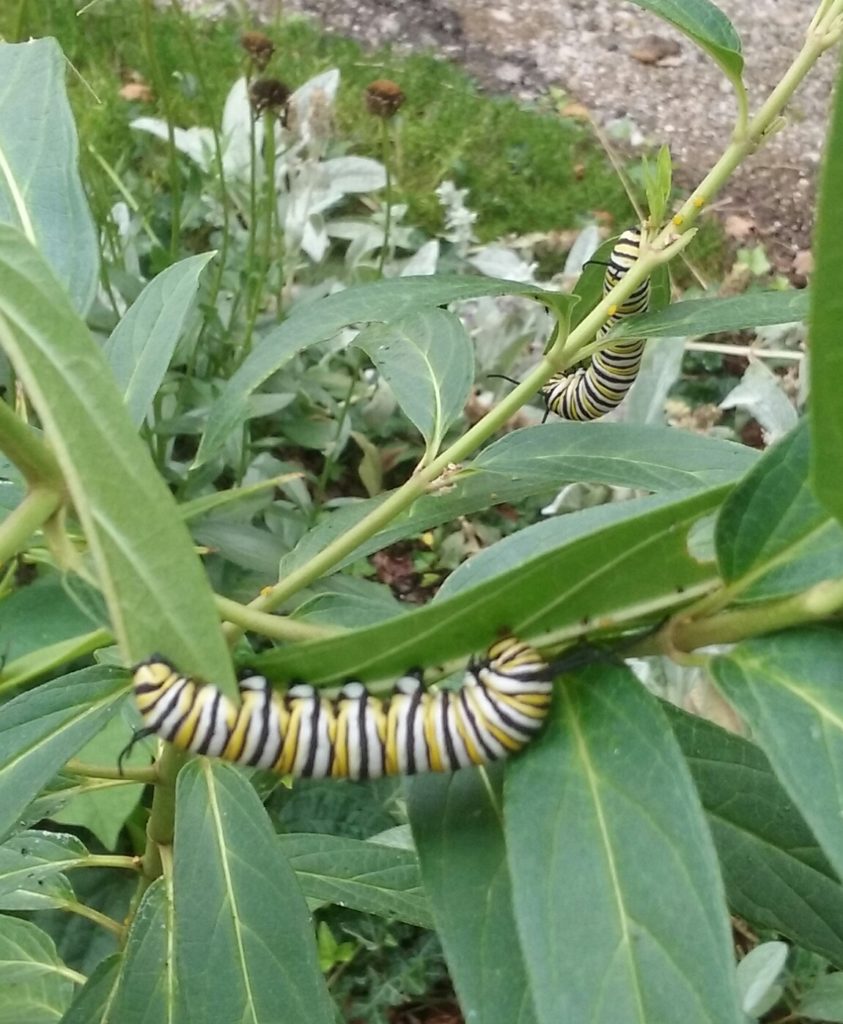
Last year the Asclepias in our garden center were visited by two giant voracious caterpillars. My wife, who loves monarch butterflies as much as a good cabernet, took this on as a learning opportunity for our customers. She raised butterflies on the counter in our store, brought in ladybugs, and watched our Asclepias disappear day by day. Once I saw her sell a denuded stem in a No. 2 container. The happy customer responded to her story…’I know…I know!’ The story is getting out. The foliage, after all, grows back pretty quickly, just in time for hordes of orange aphids. In our wholesale nursery, again, we’re not supposed to sell plants covered with orange aphids. Since I don’t like to apply pesticides (it’s one of my least favorite jobs), I decided to leave it up to the customer. Some took the plants along with the teeming hitchhikers.
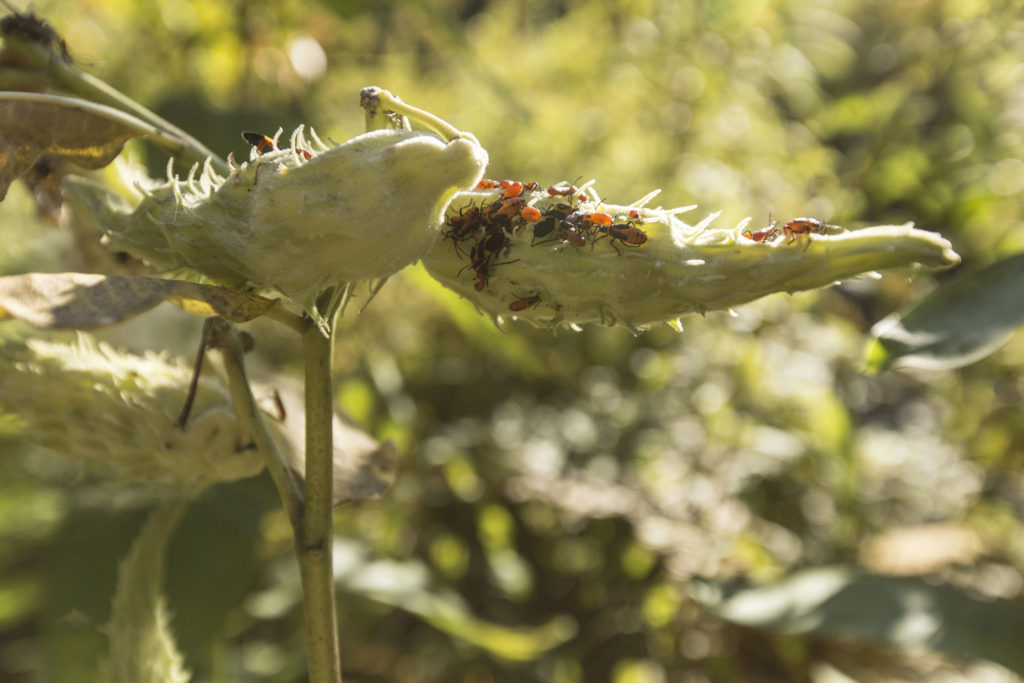
While the scientific debate regarding neonicotinoid pesticides, in particular, and their impact on pollinators rages on, we just read in a nursery industry newsletter: “Treating swamp milkweed with neonicotinoids, regardless of active ingredients, application timing and method, resulted in high concentrations of residue in nectar.” (Source: Connecticut Agricultural Experiment Station, Journal of Environmental Horticulture, Volume 35, page 24-34). While the effect of pesticide residues on pollinators remains a matter of scientific inquiry, and while it would be heresy for a nurseryman to object to all pesticides (and I don’t!), let’s rely on ladybugs and a judicious blast of water from a hose to control bugs, when we need to, on our Asclepias!
Asclepias…what a great story-plant for teaching the public about natives, nurseries, ecologies, pollinators and how it can all come together in our gardens!
 Mark Gilson is a third-generation nurseryman and past-president of Nursery Growers of Lake County, Ohio. Visit: http://gilsongardens.biz/category/marks-corner/
Mark Gilson is a third-generation nurseryman and past-president of Nursery Growers of Lake County, Ohio. Visit: http://gilsongardens.biz/category/marks-corner/
Mark
Great article! So well written and the pics are incredible! I don’t even like this plant but it sells like crazy!
Thanks Annette! As nursery professionals we need to discover a new aesthetic for native plants!